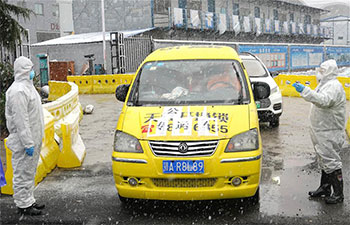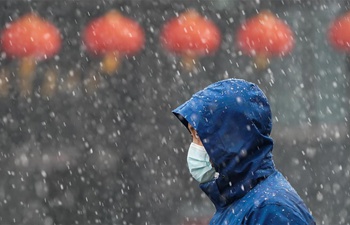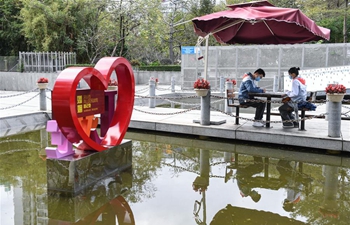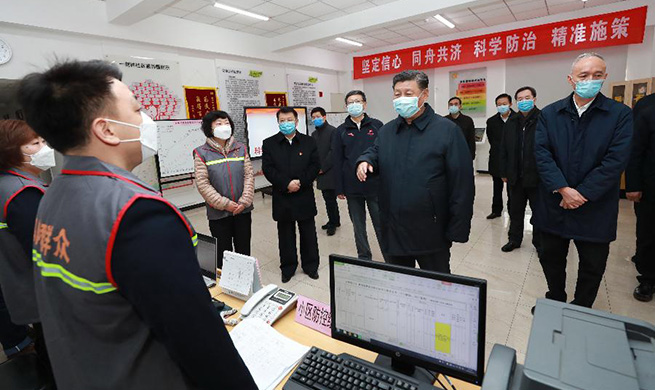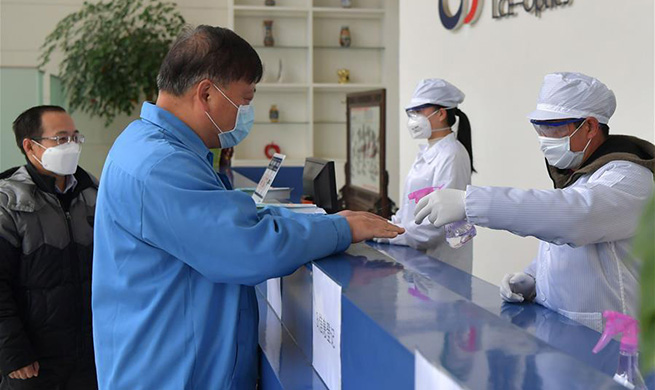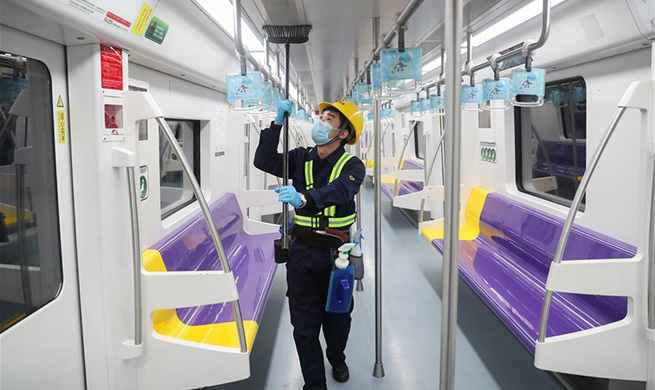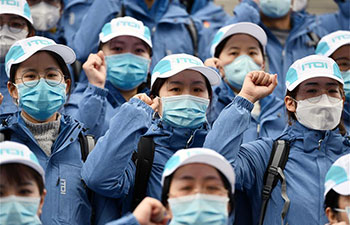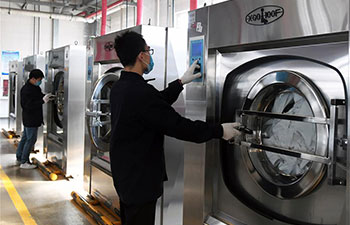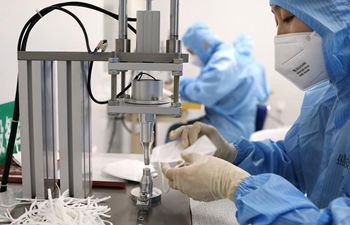BANJUL, Feb. 15 (Xinhua) -- Women in one of the Gambia's most popular rice-cultivation communities, Saruja, are massively turning to vegetable production due to low labour intensity and high profitability.
The village is situated in Central River Region South (CRR), 192 km from the capital Banjul. The community used to produce thousands of tons of rice in the past due to its proximity to the country's main rice growing sites, Jahally Pacharr. However, due to high labour intensity and serious needed investments, many women are leaving for an area where such demands are lesser.
The community women garden was developed by the National Agricultural Land and Water Management Development Project (NEMA) a few years ago with the objective of addressing rural poverty.
"We have realised that the amount of money we have been spending in rice production was not profitable to us economically, in terms of how much we have in return and not to talk about the labour intensity," Jonsaba Baba told Xinhua.
She believed that rice cultivation is not adequate to solve her needs, such as paying tuitions for her children and their social functions.
With vegetable production, she said each individual woman gets normally 4,000 dalasis (about 78 U.S. dollars) or more from a single garden bed harvest, with each woman entitled to about four beds.
"You can see one woman here will harvest more than ten bags of onion (25 kg) from the garden. We are very committed here. We have more than 200 women. Every woman in this village is here working in this garden. The gains for us are far better than rice production," she explained.
In the garden, they cultivate bitter tomato, tomato, okra, sorrels, pepper and other vegetables. While they sell most of the produce, a substantial amount is reserved home for family use.
"We are all responsible people here because most of our children are relying on their mothers in terms of their education," she said.
Adama Bah, another member of the garden, said the new endeavour is benefiting them a lot.
"We have been into rice production for so long but we were not getting anything that is sustainable. You will spend all your time in rice production but when you harvest it, everything will finish before the other harvest time," she stated.
"For garden, we can provide for our needed vegetables for daily cooking and also have money from it. This is why we are engaging in this. If this success continues, few women will be in the rice fields," she told Xinhua.
However, lack of storage facility remains a problem for them, according to her.
"We need a storage facility where we can keep our harvested produce before they are sold. We also need mobility that we can use to transport our produce to the market," she said.
The Project Director of Nema, Momodou Gassama said Saruja is among several other successful communities that have benefited from Nema intervention.
"If you go to the areas where tidal irrigations have been developed, we have seen a significant increase in productivity from the baseline of 2.5 to 3.5 and in some areas up to 4 tons per hectare in a single season," he told The Chronicle.
According to him, some communities are mobilizing incomes through the vegetable gardens up to the tune of 5 million dalasi in one season (about 970 000 U.S. dollars).
"All these gardens were constructed through the support of International Funds for Agricultural Development (IFAD). I can assure you that there are many Sarujas. Almost all the 33 Nema gardens have the same Saruja story. In some cases, I can guarantee you that some are even better than Saruja," he said.
He described gardening as a game changer since their intervention, hailing their method of using organic manure over the chemical fertilizer which creates better gains, adding "they are making so much money, changing their lives and that's the objective of the project, IFAD, government of The Gambia and the project staff."
According to Agricultural economist Mamma Sawaneh, shifting from one area of cultivation to the other is part of agricultural diversification system.
"It's very correct. It's in line with economic thinking. It's what we called agricultural diversification where the farmer can do the reallocation of some of his farm resources," he told the local newspaper The Chronicle.
According to the numbers given by the National Women Farmers Association (NAWFA), the horticultural sub-sector makes up 65 percent of the agricultural labour force, thereby providing employment for 42 percent of the total working force of The Gambia.





